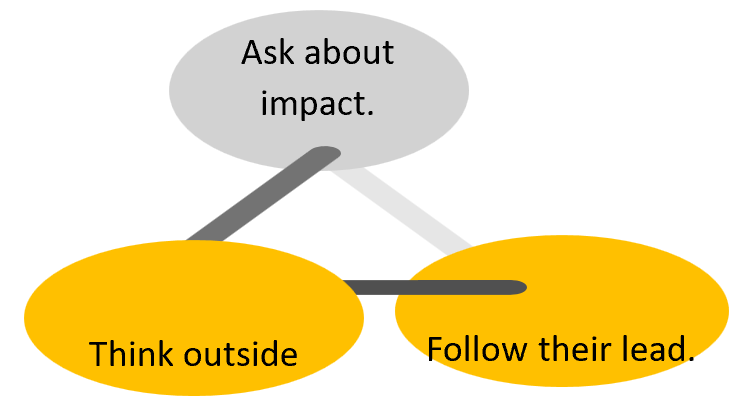
Follow to lead - part 1

Author: Aneesha Ugwoke (she/her) is currently a leader with Farm Credit Canada, CPHR Alberta member, and an anti-racism specialist.
At FCC, our leaders are truly the secret sauce to inward and outward success because they are genuinely people-centric. As we ebb and flow through our DEI efforts, I see HR professionals and leaders navigate and drive respectively (as we should).
When I think about impacts, the ‘ shoulds ’ compel me to challenge my own inclusive leadership. I’ve come to experience success in followership when leading those who have different lived experiences than me because they challenge me to seek solutions that are unprecedented or don’t fit current paradigms.
Rather than directing, I’m being directed by those who seek equity.
Certainly, to let followership ensue, you must:

These approaches may seem obtuse, but that’s assuming that we all have the same experiences and needs, which is simply untrue. To operate more effectively with those who aren’t like us, w e need to reassert and redeploy our humanness. We need to feel more un-stuck from the rut of not knowing ‘how-to’. Ultimately, as leaders and HR professionals, we need to raise the bar so that felt change inevitably leads to tangible change.
WE NEED TO ASK THOSE WHO MATTER.
Here’s another ‘ should’ : When making DEI decisions that impact the system, should we uphold business outcomes or employee experience? I’d ask you to first consider why it must be an either/or question. Compare this to the chicken and egg parable. Reflect on external impacts created by followership to vendors, potential future employees, customers, and competitors versus enclosed internal impacts only.
At the risk of sounding offensive…at times, could the business and policies be excuses to the real roadblock; you?
In other words, I don’t ask to call you out but to draw you in to remind you of your good intent and goal.
You have an employee who is asking for an allowance that isn’t within the parameter of that policy. Do you grant an exception, help identify the inequity, or decline with a soft alternative?
How do you tackle a choice between hiring for diversity and hiring for inclusivity; or hiring for skill vs experience; or hiring for the almighty Canadian experience?
Are there decisions that you could make that help you pilot an unprecedented initiative? (So that you tackle your fear of going into unchartered territory carefully and make thoughtful decisions that have been tested?)
Is it possible to seek partnerships with other leaders who could be on a hiring panel with you so that your biases can be challenged?
Could you talk about allyship intermittently in your team meetings?
Are your surveys giving you the entire picture, or are they responses to the few questions you asked? The responses could be true and valid but represent only a small bite of the entire pie.
Is it reasonable to offer flexible hours to someone participating in fasting or someone who cannot afford or find childcare easily?
Do you offer advice that doesn’t resonate with someone who practices a lifestyle with cultural nuances? 50-50 households are not ubiquitous to all cultures, all households, all women. In my culture, you do marry the family and sometimes live with them in the same house. In my case, sympathy for upholding all responsibilities devalues my culture, my values.
Undoubtedly, support is being offered. And to level up, employee assistance programs don’t cater to all needs. Through no fault of those case workers, services aren’t expansive enough for all needs. The case workers themselves don’t resonate with struggles that are particular to identities This isn’t because they lack expertise but because they may not have the same lived experience as others from more diverse backgrounds.
For followership to prevail, I’m not suggesting that you let others make important decisions that you were hired for. Instead, let’s keep that individual’s success in mind as the north star, your decisions will inevitably illustrate your authenticity and enable trust for inclusivity.
Luckily, these are the perpendicular and parallel synergies of leaders and HR professionals that I get to watch daily.
BUT EVEN GREATNESS CAN BE ELEVATED.
The views and opinions expressed in this blog post belong solely to the original author(s) and do not necessarily represent the views and opinions of CPHR Alberta.
The views and opinions expressed in this blog post belong solely to the original author(s) and do not necessarily represent the views and opinions of CPHR Alberta.





